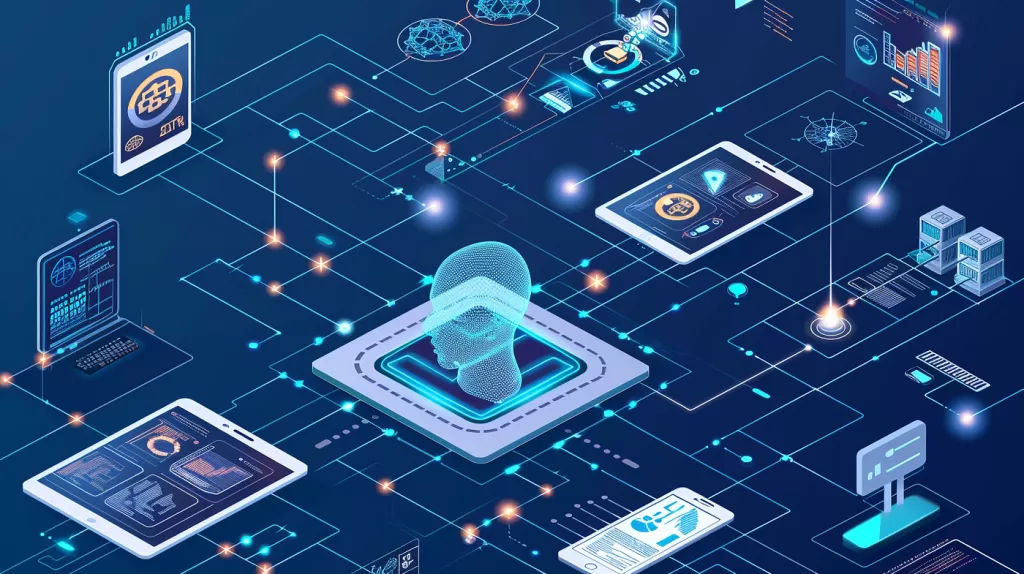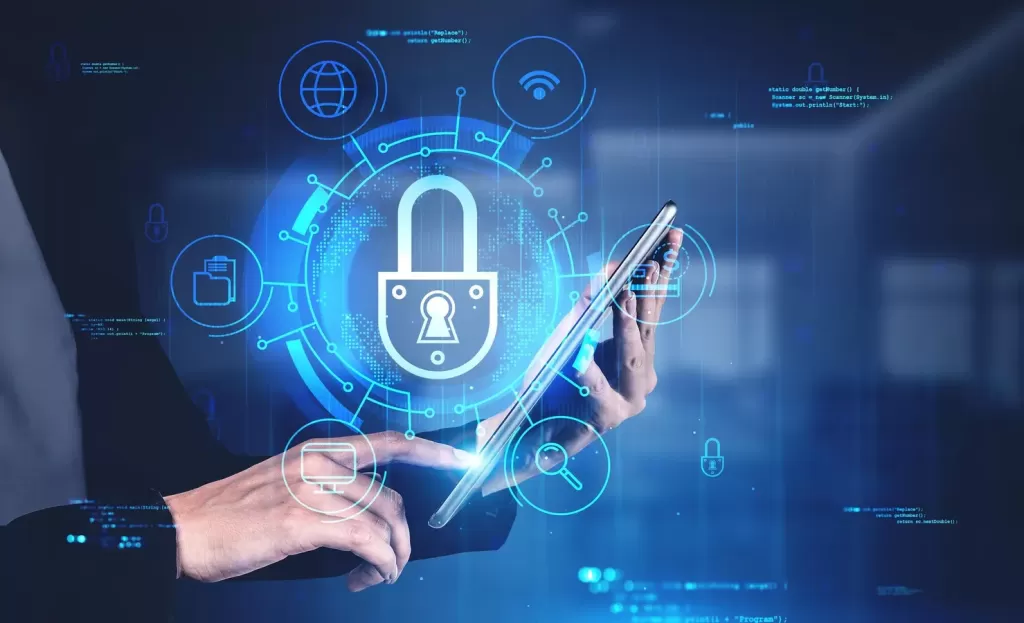Written By:
Scott McAuley
Scott is the IT Director of Texas Management Group, and has been in the IT industry for 25 years.
As we approach 2025, cybersecurity is becoming more critical than ever. The digital landscape is evolving, and with it comes new threats that businesses and individuals must prepare for.
Understanding the key cybersecurity trends and threats in 2025 will be essential to staying ahead of potential risks.
From AI-driven attacks to the rise of deepfakes, cybercriminals are becoming more sophisticated. To protect against these challenges, it’s important to know where cybersecurity is headed and how to respond effectively.
Wondering what to expect in 2025? Let’s dive into the trends and threats that will define the future of cybersecurity! Ready to learn more?
Key Takeaways
- AI-driven cyberattacks will rise in 2025, making AI-powered defense systems essential for real-time threat detection and response.
- Quantum computing threatens current encryption methods, pushing businesses to adopt quantum-resistant algorithms for future data protection.
- Zero Trust Architecture will become crucial, verifying all users and devices continuously to reduce the risk of unauthorized access.
- Social engineering and deepfake attacks will grow more sophisticated, emphasizing the need for employee training and verification protocols.
- Strengthening cloud security with encryption, multi-factor authentication, and constant monitoring is critical as cloud reliance increases.
Table of Contents
6 Cybersecurity Trends in 2025

As we look ahead to 2025, the world of cybersecurity continues to evolve. The rapid advancements in technology mean both new threats and new defense mechanisms are emerging.
Businesses must stay ahead by understanding the key trends shaping the cybersecurity landscape.
Here are six cybersecurity trends that will dominate in 2025:
1. AI-Powered Cyber Defense
AI is taking center stage in the fight against cyber threats. Machine learning algorithms are becoming more efficient at detecting suspicious activity in real-time.
This trend allows companies to respond faster and more accurately to potential breaches.
2. Zero Trust Architecture
Zero Trust Architecture is transforming how organizations secure their networks. Instead of assuming internal systems are safe, Zero Trust continuously verifies every user and device.
This approach minimizes potential attack points and provides more granular control over access.
3. Rise of Quantum Computing Security Solutions
Quantum computing poses both opportunities and risks for cybersecurity. While it offers immense computing power, it also threatens traditional encryption methods.
In response, experts are developing quantum-resistant algorithms to safeguard data.
4. Cloud Security Innovations
As more businesses migrate to the cloud, security innovations are rapidly emerging. New cloud-native security tools help protect sensitive data and improve compliance. These solutions offer better visibility and control over cloud environments.
5. Cybersecurity Mesh Architecture
Cybersecurity Mesh Architecture focuses on decentralizing security perimeters. It allows security tools to interconnect across different locations and environments.
This approach enhances scalability and flexibility, making it ideal for modern, distributed systems.
6. Privacy-Enhancing Technologies (PETs)
Privacy concerns are at an all-time high, and PETs are becoming essential. These technologies ensure data is processed securely without revealing personal information. PETs offer a critical balance between data usability and privacy protection.
6 Emerging Cybersecurity Threats in 2025
Cybersecurity threats are evolving rapidly. In 2025, we expect to see more advanced and complex attacks. Staying informed is key to protecting your business.
Here are six cybersecurity threats to watch out for, along with solutions to mitigate them:
| Cybersecurity Threat | Solution |
|---|---|
| AI-Driven Cyberattacks | Implement AI-powered defenses for real-time monitoring. |
| Quantum Computing Threats | Adopt quantum-resistant encryption algorithms. |
| Supply Chain Attacks | Strengthen vendor risk management and limit access. |
| Ransomware Evolution | Back up data, improve endpoint security, and train staff. |
| Social Engineering & Deepfake Attacks | Educate employees and verify sensitive requests. |
| IoT Device Vulnerabilities | Secure devices with strong passwords and updates. |
1. AI-Driven Cyberattacks
Hackers are now using AI to launch more effective attacks. AI can quickly find system weaknesses, making it easier to breach security.
Solution: Implement AI-powered defenses to monitor systems in real-time and detect unusual patterns before they cause harm.
2. Quantum Computing Threats
Quantum computing could break today’s encryption methods. Sensitive data could be at risk in seconds as quantum-powered attacks emerge.
Solution: Adopt quantum-resistant encryption algorithms and stay informed about advances in post-quantum cryptography.
3. Supply Chain Attacks
Cybercriminals are targeting third-party vendors to access larger companies. This method exploits weak links in the supply chain.
Solution: Strengthen vendor risk management by regularly assessing their cybersecurity practices and limiting access to critical systems.
4. Ransomware Evolution
Ransomware is becoming more dangerous with double-extortion tactics. Attackers not only encrypt data but also threaten to leak it.
Solution: Regularly back up data, implement strong endpoint security, and train employees to recognize phishing attempts.
5. Social Engineering & Deepfake Attacks
Social engineering is getting more sophisticated with deepfakes. These forgeries can trick people into giving away sensitive information.
Solution: Educate employees on recognizing social engineering and verify sensitive requests through multiple channels.
6. IoT Device Vulnerabilities
The rise of IoT devices is creating more entry points for hackers. Many devices lack strong security, making them easy targets.
Solution: Secure IoT devices with strong passwords, encryption, and regular firmware updates to minimize vulnerabilities.
5 Best Practices to Defend Against Future Cyber Threats
As cyber threats evolve, organizations must take proactive steps to stay protected. Implementing the right strategies can safeguard your business from future attacks.
Here are five best practices to defend against emerging cyber threats:
1. Adopting AI-Based Defense Solutions
AI-driven defense systems can detect and respond to threats in real-time. These solutions analyze patterns and identify potential breaches before they escalate.
2. Implementing Zero Trust
Zero Trust models ensure that no user or device is trusted by default. This approach continuously verifies access, reducing the risk of unauthorized intrusions.
3. Strengthening Cloud Security
With cloud services becoming more critical, securing them is essential. Use encryption, multi-factor authentication, and continuous monitoring to protect cloud environments.
4. Enhancing Incident Response Plans
A strong incident response plan can minimize the damage of cyberattacks. Regularly update and test your plan to ensure quick, effective responses to security incidents.
5. Fostering Employee Cybersecurity Awareness
Human error remains one of the biggest vulnerabilities in cybersecurity. Regular training helps employees recognize phishing attempts and follow best security practices.
Conclusion
As we approach 2025, staying ahead of emerging cybersecurity threats is more critical than ever. With AI-driven attacks, quantum computing risks, and evolving ransomware, businesses must be proactive in their defense strategies.
Implementing AI-powered defenses, adopting Zero Trust models, and enhancing cloud security are essential steps to safeguard against future threats.
Regular employee training and strong incident response plans will also play key roles in minimizing risk.
Prepared to defend your organization in this evolving landscape? Now’s the time to strengthen your cybersecurity approach. Stay vigilant, stay informed, and let’s keep the conversation going!
Thinking About Enhancing Your Cybersecurity Posture?
Read our blogs to uncover what’s on the horizon, and explore how our Managed Cybersecurity Services provide real-time monitoring and protection.
Be prepared for tomorrow’s threats today!
FAQ
What Emerging Technologies are Influencing Cybersecurity Trends in 2025?
Technologies like quantum computing, AI, and blockchain are driving new cybersecurity trends and defense strategies.
How Will Remote Work Impact Cybersecurity Threats in the Coming Years?
Remote work increases vulnerabilities to cyber attacks, requiring stronger network security and endpoint protection.
What Role Will Artificial Intelligence Play in Cybersecurity in 2025?
AI will enhance threat detection, automate responses, and help predict and prevent sophisticated cyber attacks.
How Can Organizations Prepare for Future Cybersecurity Threats?
Organizations should invest in advanced security tools, continuous employee training, and proactive threat assessment.






